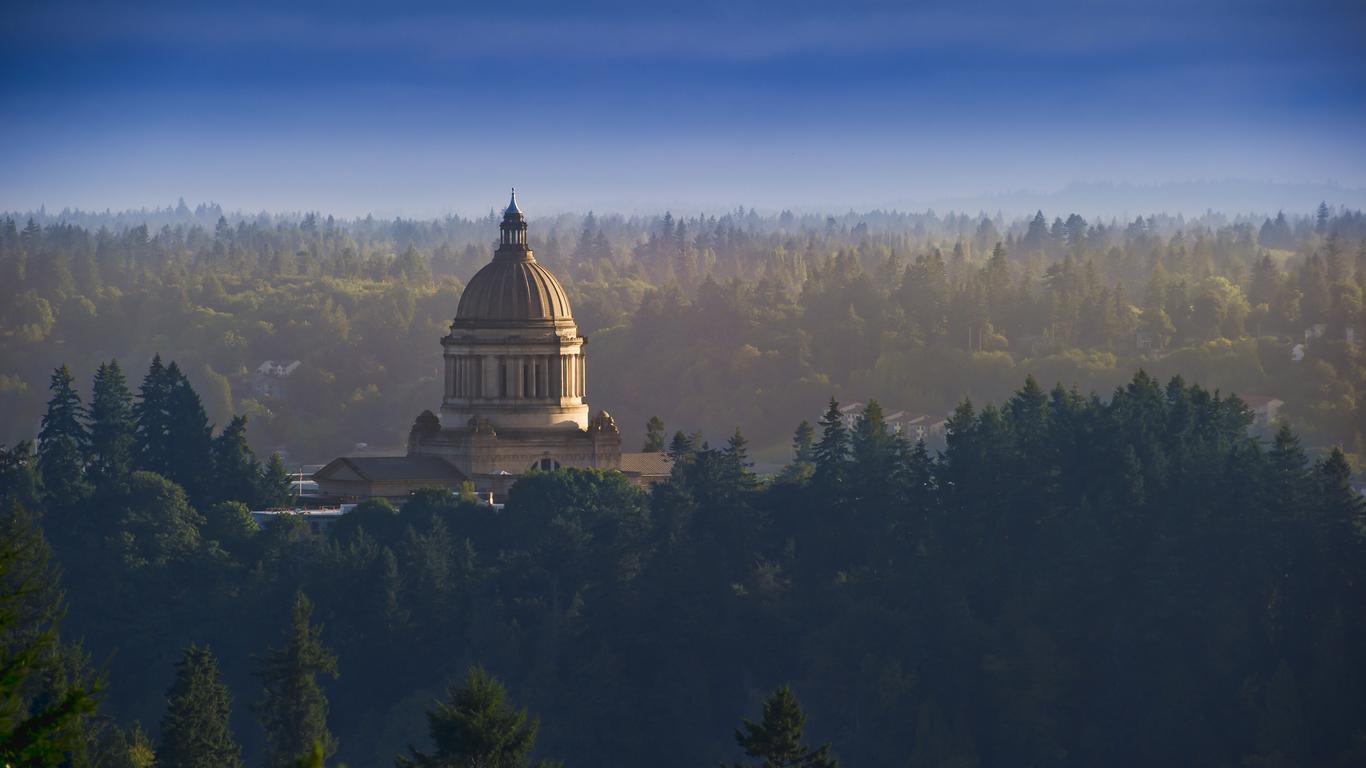Olympia is a cosmopolitan city surrounded by ancient forests and rugged coastline. In the vibrant downtown core, you’ll find trendy cafes, restaurants and bars. Visit stately buildings and stroll around the lively waterfront district, then venture out the city limits to discover the raw, rain-soaked landscapes of Washington state.
Things to do in Olympia
Washington State Capitol is set in a 30-acre park and dotted with larger-than-life buildings, including Governor’s Mansion. Book a guided tour of the residence and walk around the rose gardens. The Legislative Building was completed in 1927 and welcomes you with soaring columns, a polished marble façade and an enormous dome roof. In the Capitol Conservatory, you’ll find yourself surrounded by lush tropical plants.
The downtown waterfront district overlooks Puget Sound and is a hub for arts and entertainment. Stroll down to Percival Landing Park to stretch your legs on the boardwalk and admire the public art installations.
As the state capital, Olympia is home to excellent museums. The Hands On Children's Museum is one of the best and packed with interactive exhibits. Kids can climb into a human-sized eagle's nest, explore a miniature port and learn about local sea creatures.
From ocean-fresh seafood to organic produce, Olympia is passionate about food. On the corner of cFourth and Plum you’ll be tempted by colourful food trucks serving everything from fish tacos to fully-loaded burgers. For special occasions, make reservations at one of the city’s fine-dining establishments. Savour locally sourced seafood like razor clams, Dungeness crab and Pacific salmon.
Getting around Olympia
Olympia is pedestrian-friendly and easy to get around on foot, while buses are a great option if you’re on a budget. The city also has more than 50 kilometres of bike lanes. The city is a 30-minute drive from Tacoma and 1.5 hours from Seattle and Seattle-Tacoma International Airport is a one-hour drive away.





